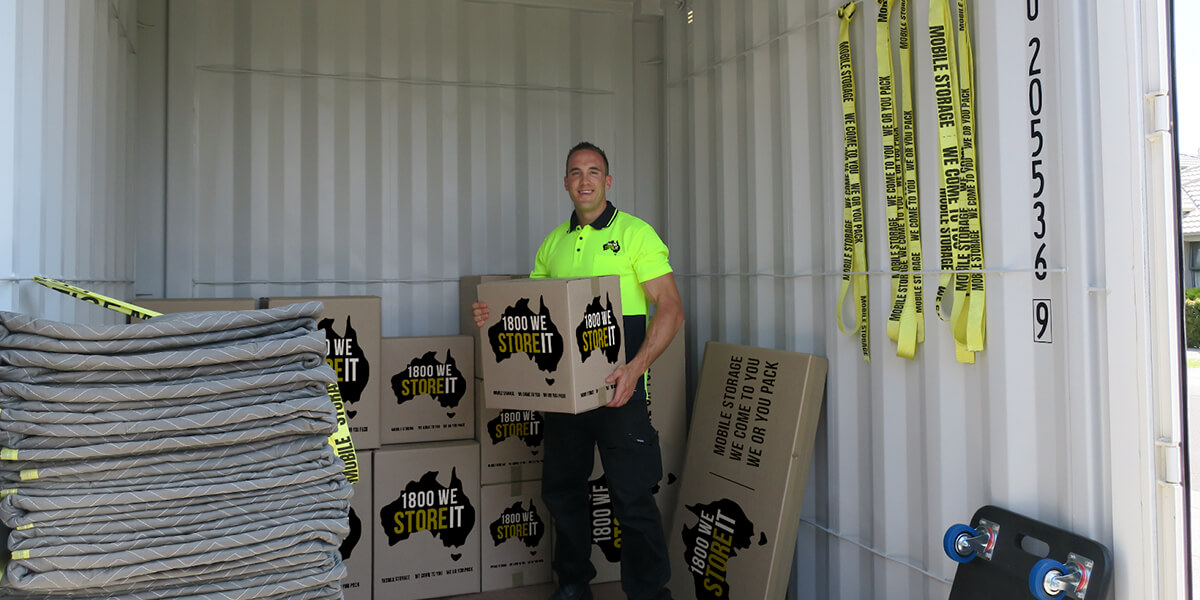Climate Considerations: Preparing Items for Storage
Posted on 4 October 2024 | 4 minute read

Whether you are a homeowner looking to reduce clutter or a business owner storing inventory, understanding how climate can affect your belongings is essential for keeping all your items pristine.
Many items you may wish to store are susceptible to damage from temperature and humidity extremes. Safeguarding these items in storage means proactively preventing mould, mildew, warping, and other climate damage.
This article covers how to prepare items to protect against climate damage while stashed away in a storage unit or shipping container.
Temperature Fluctuations
Humidity
Humidity is one of the most critical factors to consider when storing items, as the amount of moisture in the air can impact the preservation of your stored belongings.
Mould and mildew can thrive in high-humidity environments, potentially damaging furniture, clothing, and paper documents. Other materials may swell, warp, or rust in humid environments.
Low humidity must also be considered, as wooden furniture, musical instruments, and leather goods can dry out and crack.
Air Quality and Circulation
Poor air quality may lead to pollutants causing discolouration or degradation of stored items.
Poor air circulation leads to musty odours and increases the risk of a mould and mildew outbreak.
Pests and Mould
Pests and mould are not strictly climate factors but are closely related to the conditions inside your storage container.
Warm, humid environments attract pests like insects and rodents, which can cause significant damage to stored items.
Mould thrives in dark, humid conditions, especially in warm temperatures and poor circulation.
Protecting Items During Storage
One of the first steps to safeguarding stored items against climate damage is to ensure they are clean and dry. This practice will prevent mould growth and odours.
Consider using a dehumidifier to dry all internal electronic components before packing appliances and electronics.
Protecting Against Temperature Extremes
Many items in storage, like electronics, photographs, and artwork, can be sensitive to temperature fluctuations.
Climate-controlled options are more expensive and less readily available than other storage options.
When using non-climate-controlled storage, place heat-sensitive items towards the unit’s centre or container away from walls and doors, where heat transfer is more extreme.
Use insulating materials like bubble wrap or thermal blankets to create an extra layer of protection.
Drain appliances or equipment that contain water to protect them from cold damage. Use moisture-absorbing products in packaging to absorb condensation that occurs during temperature changes.
Pack smaller items in airtight containers to create a microclimate less affected by temperature changes.
Preventing Moisture Damage
Excessive moisture can lead to many problems, including rust and material degradation. Use these tips to keep the inside of your storage unit dry.
Ensure proper ventilation—Good air circulation helps prevent moisture buildup. Leave space between items and walls where possible to allow air to flow freely.
Use moisture-resistant containers—Plastic bins with tight-fitting lids instead of cardboard are an excellent option when storing items vulnerable to moisture damage.
Elevate Items—Keep belongings off the floor by stacking them on pallets or shelving, allowing air to move freely underneath.
Desiccants and Dehumidifiers—Place moisture-absorbing materials in containers and throughout the storage space. Dehumidifiers are another option for larger storage units.
Ventilation Techniques
Good air circulation is critical to controlling humidity:
Create air gaps—Try to leave spaces between boxes to increase airflow.
Use fans—Some storage areas permit fans to promote airflow.
Avoid sealing the space completely—While you want to protect against dust and pests, there are benefits to allowing some air exchange for greater humidity control.
Take action today to protect your belongings! Contact 1800 We Store It to learn about their secure, well-ventilated, pest-protected storage units. Visit their website or call their friendly customer service team to discover how they can provide the perfect storage solution. With 1800 We Store It, you can rest assured that your items are in good hands, allowing you to focus on what matters most.


